 1986 Honda Legend I (HS,KA) Dimensions, Size & Specs
1986 Honda Legend I (HS,KA) Dimensions, Size & SpecsMeasurements of the 1986 Honda Legend I, engineered for optimal performance and comfort
| Dimensions | |
|---|---|
| Length: | 4810 mm189.4 in15.8 ft |
| Width: | 1735 mm68.3 in5.7 ft |
| Height: | 1390 mm54.7 in4.6 ft |
| Weight Specifications | |
| Curb Weight: | 1350-1405 kg2976-3097 lbs |
| Maximal permitted Weight: | 1850 kg4079 lbs |
| Roof Load: | 70 kg154 lbs |
| Tire Specifications | |
| Rims Size: | 15-inch rims:
|
| Tire Sizes: |
|
The Honda Legend I (HS, KA), produced between 1986 and 1990, marked Honda’s first entry into the luxury sedan market, blending refined design with solid engineering. This generation of the Legend is a mid-size sedan with substantial road presence. Measuring 4810 mm (189.4 inches) in length, 1735 mm (68.3 inches) in width, and 1390 mm (54.7 inches) in height, it balances a sleek profile with comfortable interior space. The vehicle’s curb weight ranges from 1350 to 1405 kilograms (2976 to 3098 pounds), reflecting its robust build and quality materials. With a maximum weight capacity of 1850 kg (4079 lbs), the Legend I also supports a roof load of 70 kg (154 lbs), suited for light cargo or roof racks. The suspension rides on 6J x 15 size rims paired with tires sized 205/60 R15 or 205/65 R15, offering a smooth and stable driving experience. Overall, the 1986 Honda Legend I blends classic Japanese sedan craftsmanship with respectable dimensions, making it a notable vehicle for size comparison enthusiasts and collectors interested in luxury sedans from the late 1980s.
Discover the standout features that make the 1986 Honda Legend I a leader in its class
Have a question? Please check our knowledgebase first.
The Honda Legend I, produced between 1986 and 1990, is a sedan with a length of 4810 mm (189.4 inches), a width of 1735 mm (68.3 inches), and a height of 1390 mm (54.7 inches). These dimensions contribute to a spacious yet relatively low-profile luxury sedan design typical of the late 1980s. Its size offers a balanced presence on the road without being overly large, which suits both urban driving and comfortable cruising.
The Honda Legend I has a curb weight ranging from 1350 kg to 1405 kg (2,976 to 3,097 pounds). The curb weight refers to the vehicle's weight including standard equipment and fluids but without passengers or cargo. The maximum weight or gross vehicle weight rating (GVWR) is 1850 kg (4,078 pounds), which represents the maximum safe operational weight including passengers, cargo, and fuel. This weight range categorizes the Legend I as a mid-weight luxury sedan, contributing to its balanced handling and fuel efficiency characteristics.
The roof load capacity of the Honda Legend I is rated at 70 kg (approximately 154 lbs). This means that the vehicle’s roof can safely carry a load, such as a roof box or luggage rack, up to this weight without compromising structural integrity or safety. It’s important not to exceed this roof load limit to avoid damage or affecting driving dynamics, especially during cornering or in adverse weather conditions.
The Honda Legend I uses rims sized at 6J x 15 inches. The standard tire sizes compatible with these rims are 205/60 R15 and 205/65 R15. These tire sizes offer a good balance of ride comfort, road grip, and performance appropriate for a luxury sedan of its era. The relatively wide 205 mm tires improve traction while maintaining a comfort-oriented ride, suitable for the semi-luxury class the Legend occupies.
With a length of 4810 mm (189.4 inches), width of 1735 mm (68.3 inches), and height of 1390 mm (54.7 inches), the Honda Legend I fits comfortably in a standard residential garage. Standard garages typically range from 2,400 to 3,000 mm (7.9 to 9.8 feet) wide and roughly 4,800 to 6,000 mm (15.7 to 19.7 feet) deep. Since the Legend I's width and length fall within these dimensions, parking and maneuvering indoors should pose no issues for most users, though space for opening doors and storage depends on individual garage layout.
The Honda Legend I (HS, KA) was actually the first generation of the Legend model, produced from 1986 to 1990, so it has no predecessor generation to compare in size directly. However, in Honda's sedan lineup at the time, it was larger and more luxurious than models like the Accord or Prelude, representing Honda's entry into the luxury sedan market. Its length of 4810 mm and width of 1735 mm positioned it well above mid-size sedans of the era, offering a more spacious and premium experience.
Compared to contemporaries such as the Acura Legend (the U.S. variant), BMW 5 Series (E34), and Mercedes-Benz E-Class (W124), the Honda Legend I is competitively sized. For example, the BMW 5 Series E34 measured about 4640 mm (182.7 inches) in length, slightly shorter than the Legend's 4810 mm, while the Mercedes-Benz W124 Clocked in around 4760 mm (187.4 inches). The Legend's width of 1735 mm was somewhat narrower than German competitors, which often exceeded 1750 mm. Overall, the Legend had a marginally longer but narrower profile, making it an attractive option for buyers seeking a blend of traditional Japanese reliability and European-sized luxury.
The Honda Legend I features a spacious interior for its class and era. Its large exterior dimensions translate to comfortable seating with ample legroom and headroom, especially in the front seats. The rear seats also offer sufficient space for adult passengers, with a focus on comfort and support, befitting its luxury sedan status. While exact interior volume varies, typical features included adjustable seats and quality materials, contributing to a refined cabin environment. Its relatively low height of 1390 mm helps in maintaining a sporty profile without sacrificing headroom inside.
The first-generation Honda Legend came equipped primarily with a 2.5-liter or 2.7-liter V6 engine, which was advanced for its time, featuring Honda's VTEC technology in some markets. It delivered smooth and robust power suited for a luxury sedan, with good fuel efficiency relative to its competitors. Paired with either a 4-speed automatic or a 5-speed manual transmission (depending on market), it provided a refined and responsive driving experience. The Legend I set itself apart with balanced handling, quiet operation, and a premium feel rather than outright sportiness.
The Honda Legend I was designed with a focus on luxury combined with confident handling. Its relatively moderate curb weight of 1350-1405 kg contributed to nimble and responsive driving characteristics for a sedan of its size. The vehicle's suspension was tuned to balance comfort and control, offering stable cornering with minimal body roll. While not a sports car, the Legend's use of advanced engineering for its time, including independent suspension and good weight distribution, resulted in a smooth and engaging ride that appealed to buyers seeking more than just basic transport.
Discover similar sized cars.
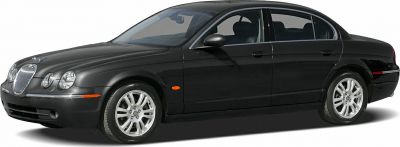
| Production: | 1998-2007 |
|---|---|
| Model Year: | 1999 |
| Length: | 4861 mm191.4 in |
| Width: | 1819 mm71.6 in |
| Height: | 1441 mm56.7 in |
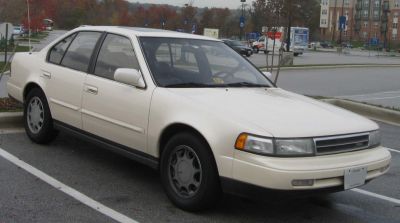
| Production: | 1988-1995 |
|---|---|
| Model Year: | 1989 |
| Length: | 4780 mm188.2 in |
| Width: | 1760 mm69.3 in |
| Height: | 1405 mm55.3 in |
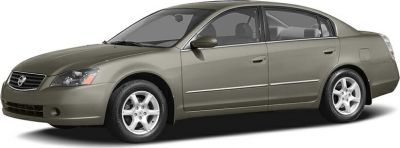
| Production: | 2002-2006 |
|---|---|
| Model Year: | 2002 |
| Length: | 4860 mm191.3 in |
| Width: | 1790 mm70.5 in |
| Height: | 1470 mm57.9 in |
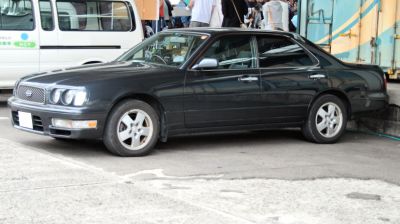
| Production: | 1995-1999 |
|---|---|
| Model Year: | 1995 |
| Length: | 4780-4860 mm188.2-191.3 in |
| Width: | 1720-1745 mm67.7-68.7 in |
| Height: | 1410-1425 mm55.5-56.1 in |
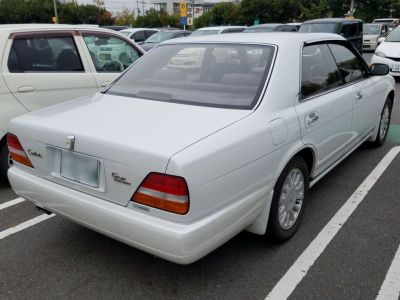
| Production: | 1993-1995 |
|---|---|
| Model Year: | 1994 |
| Length: | 4800 mm189.0 in |
| Width: | 1745 mm68.7 in |
| Height: | 1410 mm55.5 in |
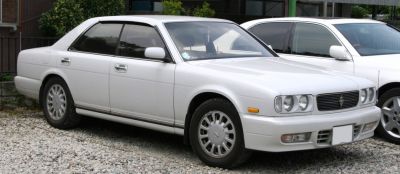
| Production: | 1991-1995 |
|---|---|
| Model Year: | 1992 |
| Length: | 4780 mm188.2 in |
| Width: | 1745 mm68.7 in |
| Height: | 1410 mm55.5 in |
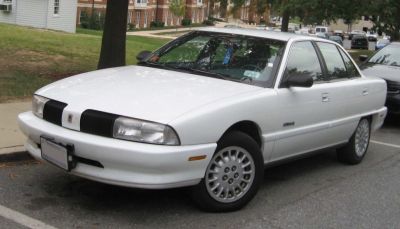
| Production: | 1991-1998 |
|---|---|
| Model Year: | 1992 |
| Length: | 4772 mm187.9 in |
| Width: | 1715 mm67.5 in |
| Height: | 1350-1357 mm53.1-53.4 in |
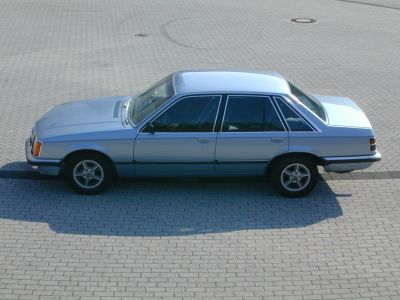
| Production: | 1978-1982 |
|---|---|
| Model Year: | 1978 |
| Length: | 4811 mm189.4 in |
| Width: | 1728 mm68.0 in |
| Height: | 1415 mm55.7 in |
